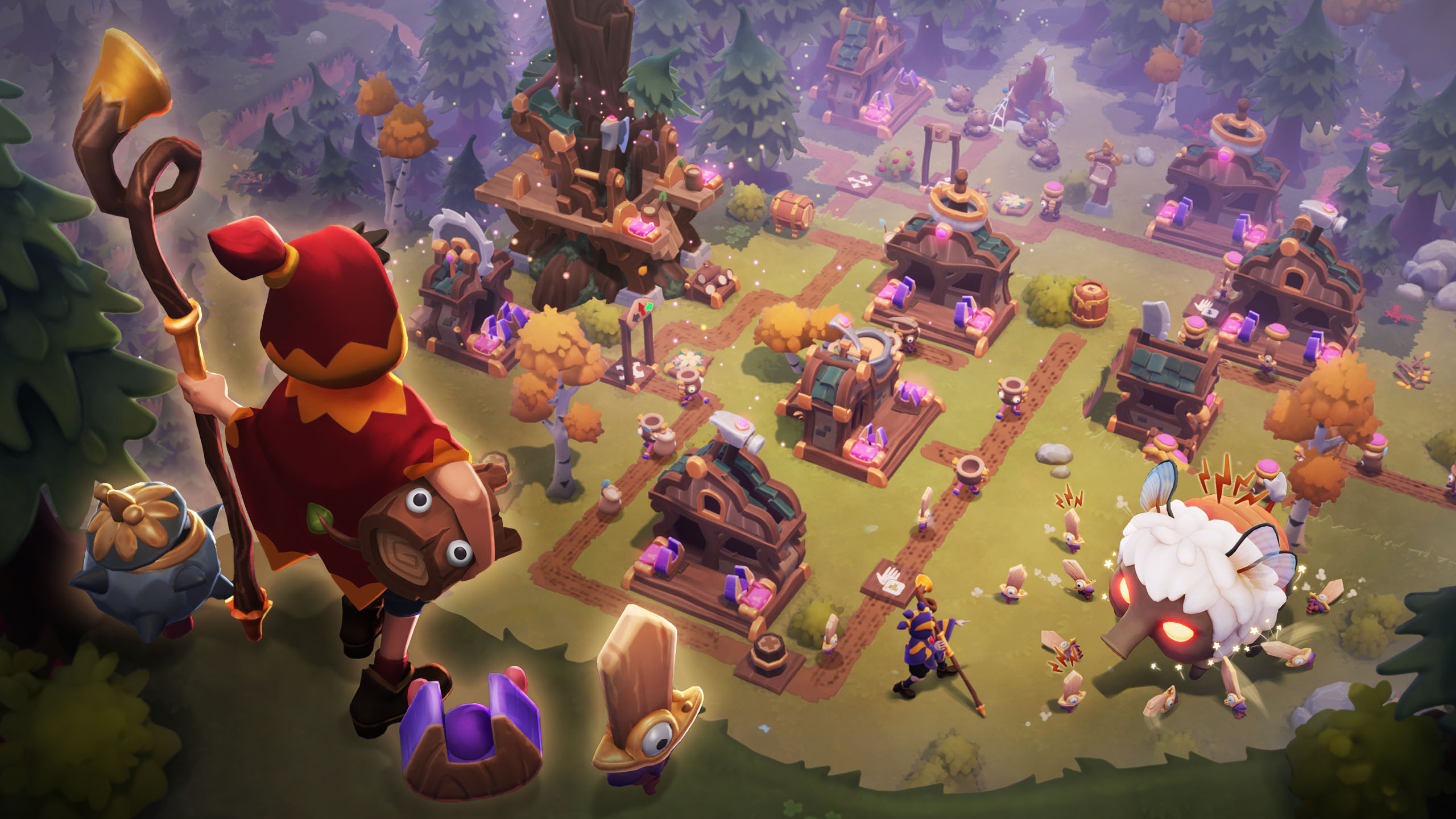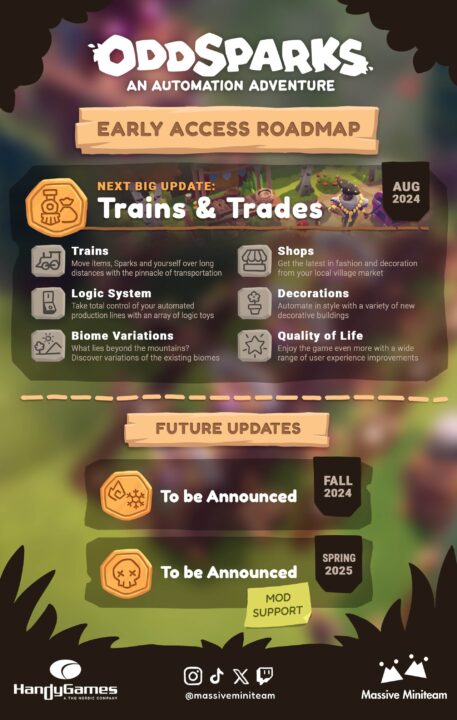0110100001101001
Tinkerers, Wayfarers, Spark-Instructors,
Welcome to May’s devlog! Thanks to all of your feedback and bug reports, our coders have been working hard on fixing gameplay issues big and small. We’ve also been working on things for the next big update: Trains and Trades! You can click on this thumbnail to check out our Roadmap if you haven’t seen it yet.
While we’re planning to have a big update in August, we also want to take care of things that people have been asking for. We need to figure which balancing and quality of life features we can prioritise – what makes sense for a smaller update and what has to be kept for the bigger update, but rest assured that we’ve been reading everyone’s feedback and are constantly working to smooth out the game.
With that, let’s talk about one of the features for the big update that we’re working on right now, Logic!
Of Logic and Logistics
So at some point during the game, it’s clear that path addons just aren’t enough. Inefficiencies, especially with overproduction, appear very quickly when you play. What’s a person to do with all these Sparks?
Well, that’s where a logic system can come in handy! If you haven’t really played a game with a logic system, it might seem intimidating. Other automation games have logic systems that can handle very complex signals, and while they’re amazingly useful tools, they can be hard to grasp.
We want something simple to understand but still powerful. Something you shouldn’t need an engineering or electronics degree to use. So… we’re going with a Boolean or binary logic system!
In short, you can send either an on signal, or an off signal and use that turn things on and off.
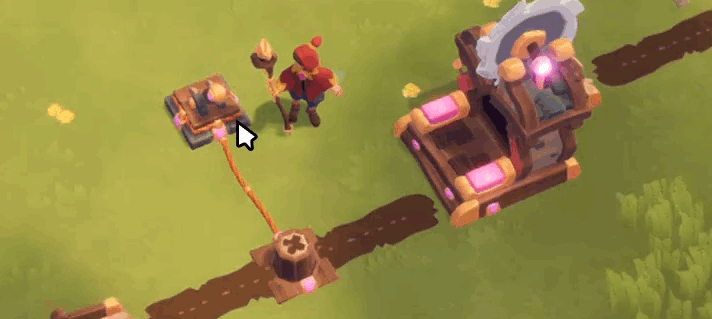
Of course, this is work in progress and some things, such as the visuals, may change.
What kind of things? Well, for a start, turning on and off path addons like the blocker or even the one way. This way you can automatically redirect the sparks in a single network to create different items depending on when you need it. But there’s a lot of things you can turn on/off, including the spark slots themselves. If you want things to run at a slower speed, or just turn off buildings entirely for an amount of time, you’ll be able to do that!
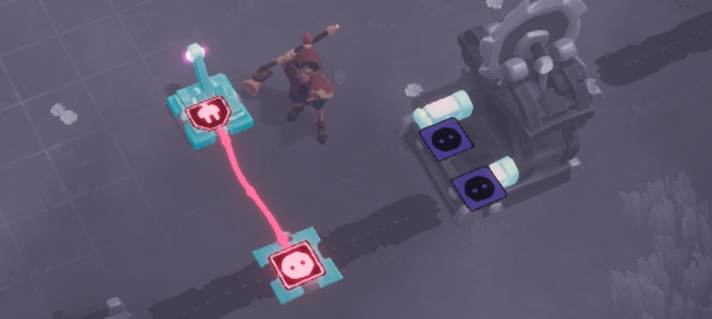
Cool new logic mode so you can see where all the plugs and sockets are.
Sensors and Sensibility
Some of you might be asking how you can do cool things if the signal system is so basic. Well, we put all of the complexity and power in the sensors!
The sensor will only send an off or on signal, but you can modify it so that it only sends a signal when you want it to. For example, the Capacity Sensor (name not final) can measure how full something is and you can change it so it sends a signal when it’s below or it’s above a certain level of fullness.
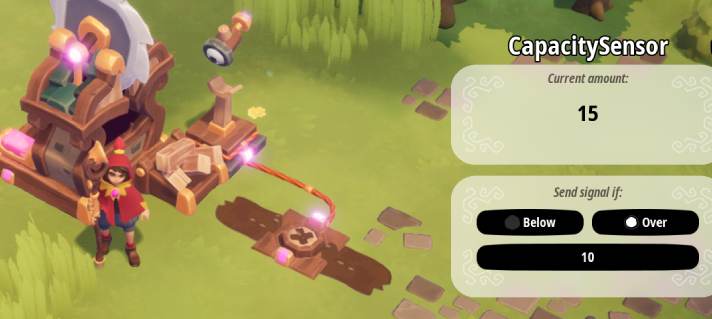
Again, all work in progress.
So whether you want to send more sparks to carry stuff and fill up a building when its output is empty or stop the sparks walking all the way there when the output is full, or do either but only for a certain amount, you can set it up how you wish!
You’ll also have access to other buildings like timers and logic gates that can help you create more complex things! With the way our system works, it’s not something that you will need to use in the game, but we figured that someone will want it.
Signaling Issues
For those who have played games with logic and circuit systems, let’s talk about Signal specifics.
So you won’t be managing signal strength in our logic system. You have networks of wires, which exists on a separate layer to the other buildings. A single network can either contain the “on” signal or the “off” signal. This signal is then written or read by any buildings connected to the logic network.
It does mean that there is an important technical limitation – if you use the system to make loops, the low propagation time in the virtual circuit means that it can pretty quickly create invalid conditions. At the moment, we’re currently testing 3 logic step as delay time. So if you want to use loops, you can only really use 3 operators before the network starts flickering like it’s the light show in a rave.
Ultimately, we mostly see the logic system’s primary use case in handling smaller networks. We want you to use logic with the sparks and path addons, and not instead of them. However, we are also planning for tools that allow players to handle multiple bits in a single tile, so when you want to create something complex, it’s not too annoying, and we’d like to also add more complex constructions like latches that can store state information.
We know that this is the kind of system that most players will only use a little of, and some players will use a lot of, and hopefully we can take care of both needs. We can already hear a few of you cracking your knuckles and dusting off your truth tables and are looking forward to the automated monstrosity that you’re planning on creating. We already got the classic seven segment display to test out our basic system!
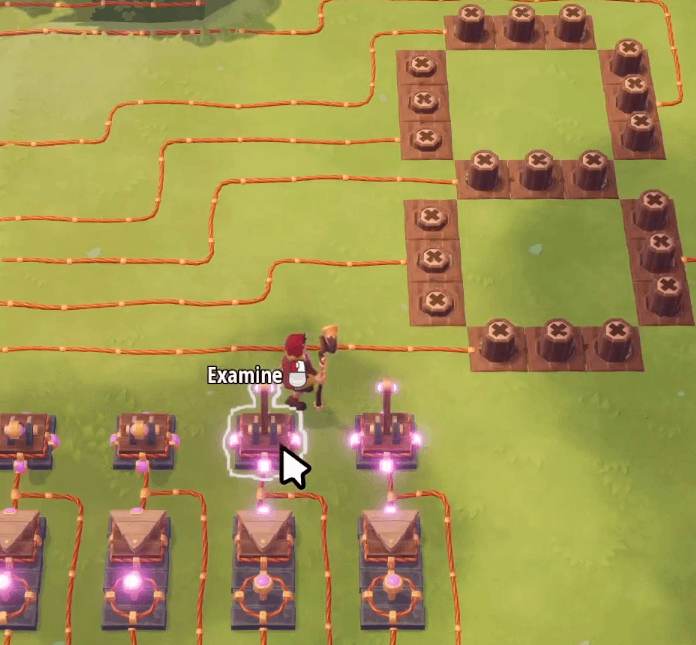
And a glimpse at our NOT gate!
That’s all for now
We’ll come back next month with more news of what we’re working on for the next update. If you’re hungry for more WIP stuff, you can join us in our Discord! We actually already showed off the seven segment display there last week. Talk to you soon!
